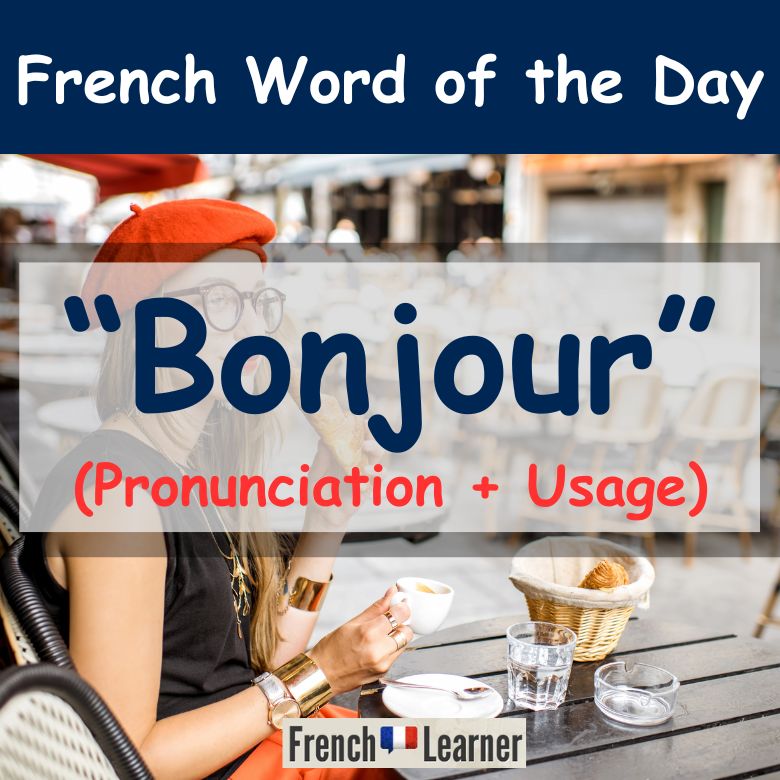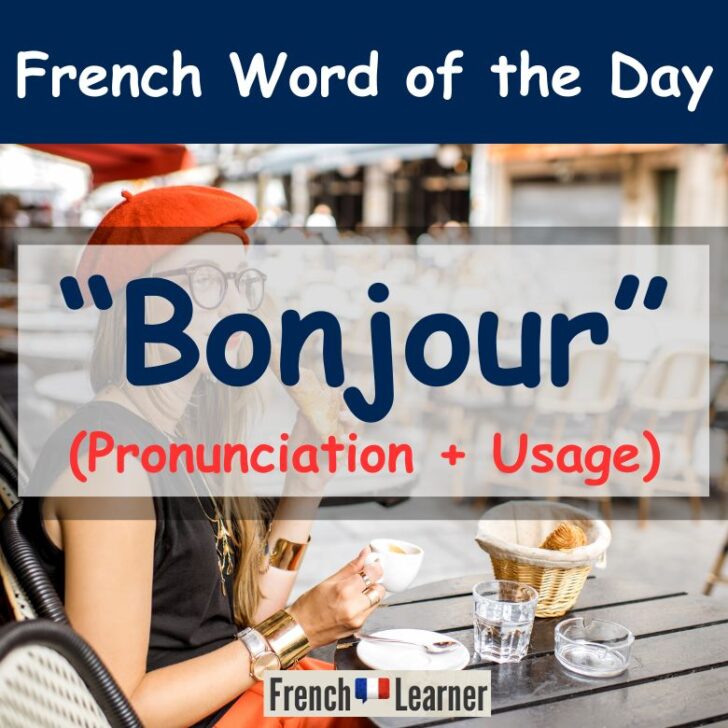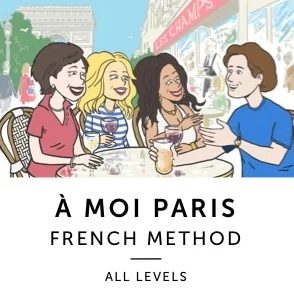What does “Bonjour!” really mean?
The French word, “bonjour” (Pronunciation: bɔ̃ʒuʀ) has several definitions. Bonjour translates to “good morning” when used early in the day. Bonjour also translates to “hello” when used during the rest of the daytime until late afternoon. This post also explains bonjour vs. bonne journée as well as four expressions with “bonjour”.

Bonjour pronunciation
The word “bonjour” is a combination of two words: bon which means good and jour which means day. The word has two syllables. “Bon” means good and is a combination of “b” plus the nasal “on” sound [ɔ̃].
“Jour” is pronounced with a soft -j plus ou, which sounds “oo” as in food and a French -r. The pronunciation symbols for jour are: [ʒuʀ].
Learn how to pronounce “bonjour” with this video:
Video source: frenchsounds
Bonjour vs. bonne journée
It is important to clarify the difference between “bonjour” and “bonne journée”.
While “bonjour” means hello and is used at the beginning of an encounter, “bonne journée” translates to “have a nice day” and is used at the end of an encounter.
bonne journée
Interestingly, in French-speaking Canada, bonjour can mean both “hello” and “have a nice day”.
French expressions with bonjour
The word “bonjour” has many usages and is used in many expressions.
1. Bonjour tout le monde!
“Bonjour tout le monde!” translates to “Hi everybody!”. For example, “Bonjour tout le monde! Comment allez-vous?” (Hi everybody! How are you?).
2. Passer le bonjour à quelqu’un
The expression “passer le bonjour à quelqu’un” translates to “to say hello to somebody”. For example, “Passe le bonjour à Pierre de ma part” (Say hi to Pierre for me).

3. Souhaiter le bonjour à quelqu’un
Similar to “passer le bonjour à quelqu’un”, the expression “souhaiter le bonjour à quelqu’un” means to “wish somebody hello”. For example, “Souhaite le bonjour à ta famille de ma part” (“Say hi to your family for me”).
4. Rebonjour!
The word “rebonjour” means “hello again” as a -re prefix is added to “bonjour”. Use “rebonjour” when seeing somebody again, usually during the same day. For example, “Rebonjour! Je suis là de nouveau!” (Hi again! I’m back!).
Become an expert in French greetings!
“Bonjour” is not the only game in town when it comes to French greetings. This page on our site covers 20 ways to say hello and this page covers 15 ways to say goodbye. This page provides a complete overview of French greetings and these pages closely examine the words “salut“ (hi and by), “ça va“ (how’s it going?) and “au revoir“ (goodbye).
Related lessons:
![Bonjour pronunciation [bɔ̃ʒuʀ]. Meaning: Common French greeting; 'Good morning' before noon; 'Hello' for remainder of the day.](https://www.frenchlearner.com/wp-content/uploads/2022/08/bonjour-meaning.png)




